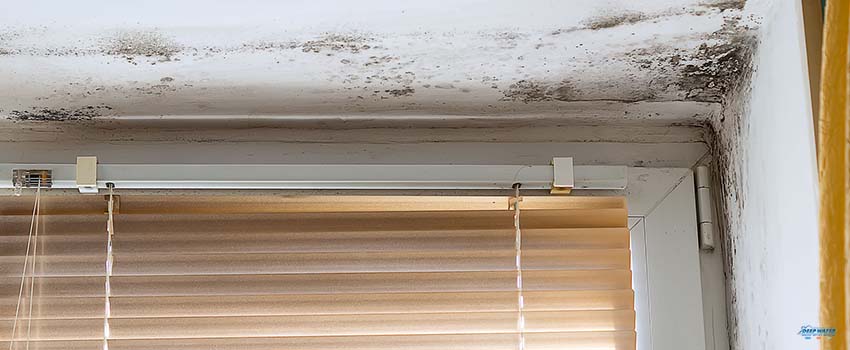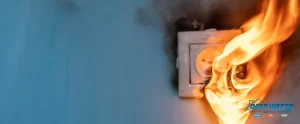The alarming sight of mold spots in your basement or bathroom can be distressing. A small amount will not cause illness, but it is important to know how to do mold removal safely from your home and prevent it from becoming a larger problem.
It’s best to address the mold as soon as possible. If left unattended, it can spread to larger areas. It can destroy household valuables and trigger an allergic reaction in some people.
It is important to keep the bathrooms and other rooms of your home dry and cool to prevent mold growth. But even with your best efforts, mold can still grow in unwelcome places. We give you your complete guide on what to use to get rid of mold.
Mold Vs. Mildew
Because of the similarities between these organisms, there is a lot of confusion over what mold and mildew are.
Mildew is a specific type of mold. Both mildew and mold thrive in moist environments. They are both common in homes, particularly in areas that have suffered from water damage.
Although mold and mildew share many commonalities, there are some key differences between them.
1. Mold burrows, but mildew grows on surfaces.
Mold and mildew can occur on natural materials such as wood, leather, and paper. They’re more likely to appear in damp areas such as basements and bathroom walls. Mildew thrives in humidity, which is why you will see it in shower stalls and windowsills.
Mildew is a surface-fungi. It’s easy for people to see it in moist areas and causes less damage. On the other hand, mold is more pervasive and can burrow beneath the surface, making it difficult to eradicate.
2. Both pose health risks.
There are health risks associated with both mildew and mold. However, the effects of mold, especially black mold or Stachybotrys Chartarum, can be much more serious.
Mildew can cause mild respiratory problems, sore throats, and headaches. Mold can also cause eye and skin irritations, congestion, respiratory illness, and general aches. It is important to eliminate mold and mildew immediately once they are detected.
3. Cleaning mildew is easier compared to removing mold.
The key difference between mildew and mold is how they are eliminated.
Mildew can be removed with household cleaners and a scrub brush. It is important to identify the type of mold once a fungus is identified. The process for removing it will vary depending on its nature. While some types of mold can easily be removed using bleach or specialized cleaners, others require protective gear such as a mask and goggles. Some molds, such as Stachybotrys chartarum, require professional mold removal.
How to Get Rid of Mold in House Naturally
The size of the problem, including the surfaces of materials to be cleaned, will determine the tools required for mold removal.
Isolate larger areas to prevent mold from spreading from one room to another. Plastic sheets and drop cloths are effective in this situation. A dehumidifier could be a good option for larger indoor projects.
What to use to get rid of mold? Prepare the following materials for smaller projects of household mold removal:
- Metal brush for mold on wood
- Soft brush for materials such as fabrics
- Toothbrush for small corners
- Spray bottle
- Measuring cups, spoons, and a funnel
- Rags or paper towels
- Rubber gloves, a mask, and goggles
Let’s now learn how to get rid of mold in house with these natural mold cleaning solutions!
1. Vinegar
Vinegar, specifically distilled white vinegar, is a natural, non-toxic, and effective way of removing household mold. White vinegar, which is mildly acidic, has been very effective in treating over 80% of mold species. White vinegar is safe and affordable and can be found at most grocery stores.
Vinegar is very safe to use to clean mold. You can also use it as a spray to kill mildew. To minimize exposure, you need to wear gloves, a mask, and goggles. Vinegar is most effective when used at its full strength.
Pour the white vinegar into an airtight container. Spray the vinegar directly on the mold. Do not scrub or rinse the mold. Let the vinegar sit for at least one hour. This will allow the vinegar to penetrate the mold. If the stain persists after one hour, you can use baking soda to clean it.
In a spray bottle, mix one teaspoon of baking soda with two cups of water. Once the solution is completely dissolved, spray it onto the mold and scrub it with a brush. Repeat if necessary. Use a clean, wet cloth to wipe the area to remove the solution.
Vinegar can safely be mixed with other natural cleaners like salt, hydrogen peroxide, and lemon juice. Mixing vinegar with bleach can create toxic solutions.
Spray the affected area once a week and then wipe it clean. White vinegar can also be used to stop mold growth in problem areas. A room dehumidifier or fans are helpful for larger indoor areas. Fans should be used with care to ensure that they don’t blow mold spores around the house.
2. Baking Soda
Hailed as a handy and versatile ingredient for almost any activity, such as baking, cleaning, and deodorizing. Baking soda can also be used to remove mold from your home.
Baking soda, an alkaline compound, can produce carbon dioxide when exposed to acidic compounds like vinegar. Baking soda can be used to clean molds with or without vinegar. It must be fresh to work well.
These are the two main ways baking soda can be used on mold.
Liquid Spray Treatment
- To make a baking powder spray, mix two tablespoons of baking soda and two cups of water in an empty spray bottle.
- Shake the spray bottle until it dissolves completely.
- Spray the mold with the mixture and scrub it with a brush.
- Spray again. Let it dry.
Paste Treatment
- Mix 50/50 water and baking soda in a bowl to make a paste.
- Let the paste dry on the mold. Use a brush to scrub the mold.
- Follow the paste treatment with a liquid spray solution if the area requires more attention. Baking soda has the advantage of absorption, reducing the likelihood of mold recurring.
3. Hydrogen Peroxide
Many people already have hydrogen peroxide in their homes. Hydrogen peroxide can be used as an antiseptic and oxidizer and a bleaching agent. It is effective in the removal of various types of mold. When hydrogen peroxide comes into contact with bacteria, it bubbles. The hydrogen peroxide’s ability to bubble when it comes in contact with bacteria is a sign that it is helping to reduce the growth of mold. Hydrogen peroxide is safe to use on porous and non-porous surfaces.
To get rid of mold using hydrogen peroxide, do the following steps:
- Spray hydrogen peroxide directly onto porous materials.
- Allow it to sit for at least 15 minutes before you wipe off the solution with a damp, clean cloth. Repeat this process as needed.
- After the mold has been removed, wipe the area dry with a towel or a clean cloth.
- For non-porous materials, mix 50/50 hydrogen peroxide with water in a spray bottle.
- Spray the area. It can then be left to dry for 15 minutes before washing with warm soapy water.
Be careful when handling hydrogen peroxide. Make sure it does not come in direct contact with skin or eyes. It may cause skin reddening or blotches, including irritation and pain in your eyes. Ingestion can lead to nausea, sore throat, stomach pain, and abdominal pain.
When to Hire Professionals for House Mold Removal
Although there is an available spray to kill mildew, including mold and mildew remover, available in grocery stores, cleaning mildew or getting rid of mold may sometimes require professional help.
1. The mold growth area exceeds ten square feet.
If the mold is more than 10 square feet in area, it’s best to call a professional. Large mold colonies can only be removed by using heavy-duty chemicals. The local public health department can advise and refer you to an expert in removing mold.
2. The mold keeps growing back.
Have you tried to clean the mold only to see it grow back? This means that the mold has advanced beyond simple cleaning.
3. The mold feels slimy and has greenish-black color.
Stachybotrys chartarum is the most toxic mold. It is the mold to avoid. Call professionals immediately if a mold looks unusually slimy and has a greenish-back color.
4. Someone in the household suddenly fell ill.
Because mold causes severe health problems, be on the lookout for anyone in the household suddenly falling ill, especially when you know that your place has molds. Call a professional immediately to get rid of the problem.
Deep Water Emergency Services & Mitigation Eliminates Mold and Mildew
What kills mold? Let the experts at Deep Water Emergency Services & Mitigation answer the question and walk you through the process of mold mitigation in Denver, CO.
Your home should be a haven free of mold and mildew. Call us for any mold and mildew infestation, and we’ll mitigate such problems immediately.






